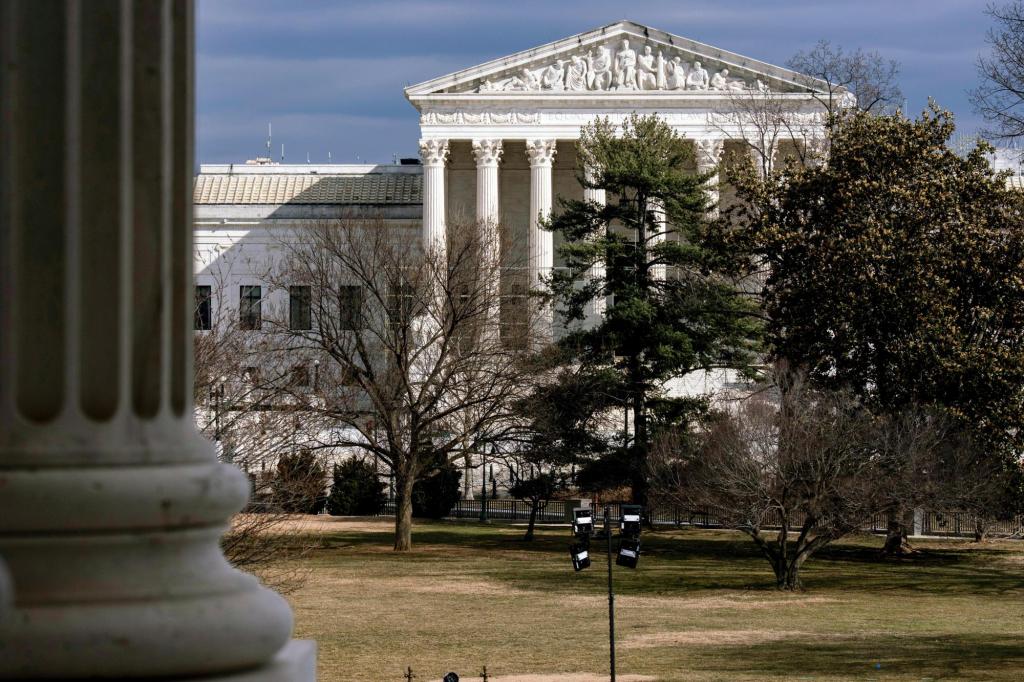Imagine a heavy rainstorm hits your city, and suddenly, raw sewage spills into the ocean. This isn’t just a hypothetical scenario for San Francisco, but a real issue that recently reached the highest court in the land. The Supreme Court’s decision has just made it harder for the Environmental Protection Agency (EPA) to regulate these discharges, sparking debates and discussions across the nation.
Understanding the Supreme Court’s Decision
On a pivotal Tuesday, the Supreme Court handed down a ruling that shook the foundations of environmental regulation. By a narrow 5-4 vote, the court’s conservative majority decided in favor of San Francisco, stating that the EPA overstepped its bounds with the Clean Water Act.
The crux of the matter? The EPA’s water pollution permits contained what the court deemed “vague requirements” for maintaining water quality. Justice Samuel Alito, writing for the majority, emphasized that the EPA cannot hold cities and counties accountable for the quality of the water bodies into which they discharge wastewater.
The Dissent and Unusual Alliances
Not everyone on the court agreed with this stance. Justice Amy Coney Barrett, a conservative, joined the court’s three liberal justices in dissent. This split highlights the contentious nature of environmental regulation and its impact on local governance.
Interestingly, the case brought together an unusual coalition. San Francisco, a liberal stronghold, found itself aligned with energy companies and business groups. This alliance underscores the complexity of environmental issues, which often transcend traditional political divides.
Implications for Water Pollution Control
This ruling is the latest in a series of decisions where conservative justices have curtailed pollution control efforts. The implications are far-reaching, affecting not just San Francisco but cities and counties across the United States.
Here’s what this means for water pollution control:
- The EPA’s ability to enforce strict water quality standards through permits is now limited.
- Cities and counties may face fewer regulatory hurdles when dealing with sewage discharges during heavy rains.
- Environmentalists worry that this could lead to increased pollution in rivers, lakes, and oceans.
Environmental Impact and Public Health
The environmental impact of this ruling cannot be overstated. Raw sewage in waterways poses significant risks to public health and marine life. During heavy rains, when sewage systems can be overwhelmed, untreated waste can flow directly into rivers and oceans, leading to contamination and health hazards.
However, the ruling also raises questions about the balance between environmental protection and the practical challenges faced by municipalities. Cities like San Francisco argue that strict EPA regulations can be burdensome and difficult to meet, especially during extreme weather events.
The Broader Context of Environmental Regulation
This case is part of a larger narrative about the role of federal agencies in regulating the environment. The Clean Water Act, enacted in 1972, was a landmark piece of legislation aimed at restoring and maintaining the chemical, physical, and biological integrity of the nation’s waters.
Over the years, the EPA has used its authority under the Act to set standards and issue permits to control pollution. However, this authority has been challenged and redefined through various court cases, including this latest Supreme Court decision.
The Role of the Supreme Court
The Supreme Court plays a crucial role in interpreting the law and defining the limits of federal agency power. In this case, the conservative majority’s decision reflects a broader trend of limiting the scope of regulatory authority.
Justice Alito’s opinion emphasizes the need for clear and specific regulatory requirements. He argues that vague standards create uncertainty and unfairness for those who must comply with them. This perspective has resonated with other conservative justices and influenced recent environmental rulings.
Reactions and Future Directions
The ruling has elicited strong reactions from various stakeholders. Environmental groups have expressed concern about the potential for increased pollution and the weakening of the Clean Water Act. They fear that this decision could set a precedent for future cases, further eroding environmental protections.
On the other hand, city officials and business leaders have welcomed the decision. They argue that it provides much-needed clarity and relief from what they perceive as overly stringent regulations. They believe that local governments are better positioned to manage their environmental challenges without excessive federal oversight.
Looking Ahead
What does the future hold for water pollution control in the wake of this ruling? Here are some potential directions:
- States and local governments may take on a more significant role in regulating water quality.
- The EPA might need to revise its permit requirements to comply with the court’s decision.
- Environmental advocates may push for legislative changes to strengthen the Clean Water Act.
- More legal challenges could arise as cities and counties navigate the new regulatory landscape.
Conclusion: Balancing Environmental Protection and Practicality
The Supreme Court’s decision in favor of San Francisco marks a significant shift in the regulation of sewage discharges. It highlights the ongoing tension between environmental protection and the practical challenges faced by municipalities.
As we move forward, it will be crucial to find a balance that protects our waterways while acknowledging the realities of managing waste during extreme weather events. The conversation around this issue is far from over, and it will continue to shape environmental policy and public health for years to come.
In the end, the ruling serves as a reminder of the complexities involved in environmental regulation. It underscores the need for clear, fair, and effective policies that can adapt to the changing needs of our society and our planet.
Source: www.mercurynews.com

